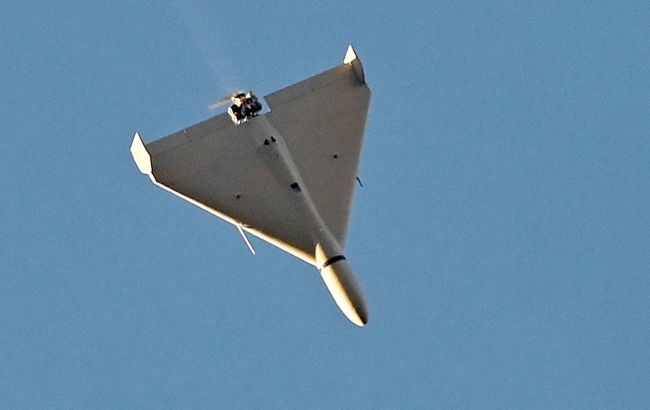Shahed attack: How Russia lures air defense with drones and how long they can circling over Ukraine
 Photo: Russia may use Shaheds to distract Ukrainian air defense (Getty Images)
Photo: Russia may use Shaheds to distract Ukrainian air defense (Getty Images)
Russia is not halting its long-lasting Shahed drone attacks. Due to the circling of enemy drones over regions, air raid alerts can last for more than 14 hours in some areas. The Russians are likely using Iranian drones to divert the attention of Ukraine's air defense systems.
Valerii Romanenko, an aviation expert and senior researcher at the National Aviation University (NAU), explained to RBC-Ukraine the purpose of Russia’s Shahed drone attacks and how long these drones can remain airborne.
Contents:
Range and Airborne Duration of Shahed Drones
According to the expert, the discussion revolves around these unmanned aerial vehicles' tactical and technical characteristics. He noted that the recorded range of a Shahed drone is 1,500 km, although the Iranians claim a range of 2,000 km.
"Even if we assume a range of 1,500 km, the cruising speed of a Shahed drone is about 180 km/h. However, the speed in the guidelines for calculating mobile fire groups is 185 km/h. The Iranians claim that the speed can reach up to 200 km/h. If we take the range of 1,500 km and divide it by 200 km/h, we get 7.5 hours in the air," Romanenko explained.
If launched from Cape Chauda in the temporarily occupied Crimea, the drone flies about 1.5 hours to reach the Ukrainian coast. After that, an air raid alert is announced, and the drone can circle over Ukraine for another six hours.
Meanwhile, the specialized publication Defense Express reports that some Western sources estimate the flight range of the Shahed-136 drone to be 2,500 km, which, at a similar cruising speed, means it could stay airborne for nearly 14 hours. Romanenko notes that it is possible to "play around" with the amount of explosives and fuel on board the UAV. For example, the number of explosives can be reduced, and the amount of fuel increased so that the Shahid remains airborne longer.
"I don't know where the figure of 2,500 km came from, but the Iranians haven’t published the tactical and technical characteristics. The US has recorded a range of 1,500 km. To achieve higher figures, there were reports that the Iranians were reducing the warhead and increasing the amount of fuel. And then the range can be increased by another 500 km," the expert said.
Main purpose of Shahed drones in mass attacks
According to him, the main task of the Shahed drones is to divert air defense resources. That is, to force Ukrainian forces to use missiles to destroy them.
"If you look at the flight infographics, you can see that they circled over Ukraine, fulfilling their main function. At the final stage, they either hit or missed, were shot down, or if they remained intact, they fell somewhere and hit something," Romanenko recalled.
At the same time, from time to time, the Air Force reports that a certain number of enemy UAVs were "lost location-wise." As the expert explained, Shahed drones fly according to a program, and when they enter a zone with active electronic jamming, they may lose their orientation. If they cannot determine their location afterward and run out of fuel, they fall. This is why they sometimes cannot be found.
He gave an example of how a drone that entered Poland during a massive Russian attack on Ukraine on August 26 still has not been found.
As for Russia’s stock of Shaheds, unfortunately, they have plenty. The expert recalled that Russia announced at the end of last year that it would produce 5,000 of these drones annually. If you divide that by 12, the monthly rate would be approximately 416 units.
How long air terror could last and what role gerberas play
It is important to note that for distraction purposes, the enemy may also use special drones like the Gerbera, which do not carry significant reconnaissance equipment or any warheads. Their task is simply to fly according to a program and distract air defense from real targets.
"If Shaheds are used to divert attention from cruise missiles, then Gerberas divert air defense attention from both cruise missiles and Shaheds. The problem with Gerberas is that they can be difficult to find as they are much lighter and have a shorter range. For example, if such a drone falls in a forest, it may just hang on a tree, and no one will find it," Romanenko noted.
In response to a clarifying question from RBC-Ukraine about how long the aggressor can continue this air terror, he replied that it could go on for a long time if the serial production of kamikaze drones is established in the Russian city of Yelabuga, where the so-called special economic zone "Alabuga" is located.
How Ukraine fights drones and why Shaheds are flying higher
The expert also pointed out that Ukraine’s Defense Forces are receiving more and more anti-drone tools from partners. For instance, it was recently reported that the Netherlands will provide Ukraine with 51 drone surveillance radars by the end of the year. Additionally, Kyiv receives new systems from Washington with inexpensive missiles worth $25,000 with laser guidance.
"These missiles are based on the Hydra unguided rocket. The central part is inserted to turn it into a guided missile with laser guidance. And we receive the equipment, either along with pickups, or we install these systems with launchers on our pickups. These same missiles will be supplied for the F-16s. These rockets are specifically designed to destroy all types of drones," Romanenko explained.
Moreover, Ukrainian defenders are trying to shoot down UAVs with less expensive missiles. Mobile groups, Gepard anti-aircraft guns, and various artillery systems with radar or optoelectronic guidance, such as Skynex and Slinger, are used.
However, there is a problem: Russians are launching Shaheds at altitudes above 500 meters, making them unreachable for mobile groups with machine guns.
"Initially, Shaheds flew close to the ground to avoid radar detection, but now they suffer significant losses from mobile fire groups. So, they sometimes raise Shaheds to 1,000 meters, ignoring that radars will see them across Ukraine. But since mobile groups won’t be able to reach them, they decided to address the issue this way," the expert added.
As a reminder, on August 26, Russia launched the most massive aerial bombardment of Ukraine. The enemy used 236 air targets: 127 missiles and 109 attack drones. Ukrainian Defense Forces shot down 201 targets: 102 missiles and 99 UAVs.
The next day, the attack was smaller, but the number of air assault means was still significant. Russians launched 81 drones and 10 missiles. Sixty UAVs and five missiles were destroyed.
On the night of August 29, the Russian army attacked Ukraine with three guided air missiles, two missiles of unknown type, and 74 Shaheds. You can read more about the work of air defense forces on RBC-Ukraine.
This material was prepared using data from the Ukrainian Air Force, the specialized publication Defense Express, and an exclusive comment from aviation expert Valerii Romanenko, a senior researcher at the National Aviation University (NAU).

